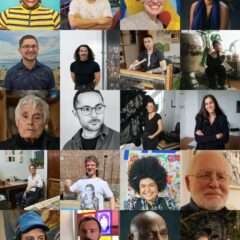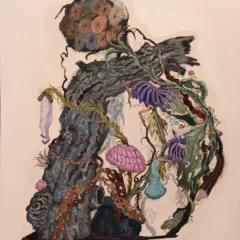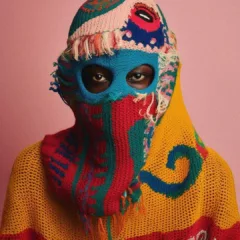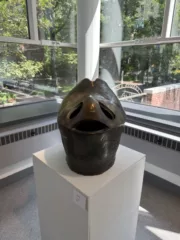Andean spaces and temporalities, Laurence Salzmann’s ‘Misk’i Kachi Runakuna’ at Taller Puertorriqueño
by Américo Mendoza-Mori
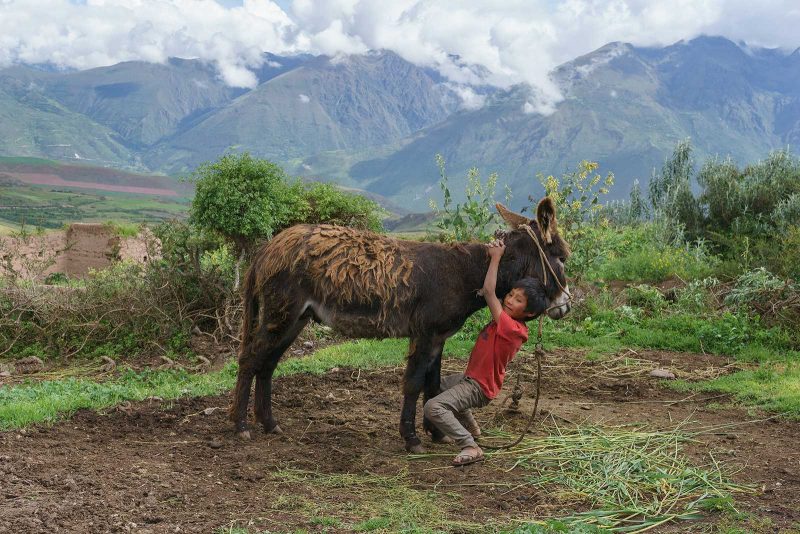
The exhibition Misk’i Kachi Runakuna by photographer Laurence Salzmann at Philadelphia’s Taller Puertorriqueño introduces us to Cusco’s Sacred Valley of the Incas through the lives of their runakuna, Quechua word for ‘people’. This rural valley is located near the world-famous ancient city of Machu Picchu in Peru; is surrounded by mountains and has very diverse geographical landscapes, including the Maras salt mine. Additionally, Maras is part of a larger spatial center that celebrates duality within the Andean philosophy, since next to the salt/kachi mine there is another site called Moray, which is considered the sweet/misk’i counterpart.
Most of the residents around Maras work on trade and in the agricultural sector. For them, nature does not just operate as a resource but a gift from Pacha Mama, the Mother Earth. Also, the majority of the people/runakuna are Quechua-speakers, the former language of the Inca Empire and currently the most spoken Indigenous Language in the Americas. Therefore, portraying Quechua was also a key factor for the exhibition, since it helped Salzmann to approach the lifestyle of this Andean region in a more holistic way. During his first trip to the Maras region, he hoped to get to know more about the local communities near Maras; he already spoke Spanish but noticed that much of their daily life happened in Quechua. This was a reminder that languages operate not just as tools for communication but also as gateways to understand traditions and perspectives.
Back in Philadelphia, Salzmann decided to audit Quechua classes at the University of Pennsylvania and engage with different campus initiatives on Andean culture. When he traveled again to the region of Maras, Salzmann shared what he learned, and people appreciated his efforts to speak their local language (many popular Quechua words are used in contemporary English: quinoa, jerky, llama, condor). Yolanda Carbajal-Zúñiga, Peruvian anthropologist and poet who collaborated with Salzmann for this project, said that the same people who at the beginning behaved a bit distant, later felt more comfortable with the presence of a camera. She also mentioned that locals in Maras not only allowed Salzmann to take pictures of their every-day life, but also welcomed him into their homes and festivities. Salzmann became a friend.
Misk’i Kachi Runakuna is the outcome of a beautiful process of learning, embracing and understanding. Salzmann’s photography celebrates the heritage of a community, where the salt mines and nature appear as guardians of Andean cosmovision: mountains, the sunlight, the nearby animals, and the salt itself are all components of local philosophy. This exhibition can be an invitation to put on new lenses to perceive and connect with natural spaces, especially since this past year many of us spent a good amount of our time at home.
Laurence Salzmann’s photographs are enriched by Yolanda Carbajal-Zúñiga’s Quechua poems which turns the exhibition into an amazing opportunity to learn more about this Indigenous Language. The exhibition allows us to travel to the Andes while also teaching us more about the life perspectives of Quechua peasants.
Misk’i Kachi Runakuna, a trilingual exhibition (English, Spanish and Quechua) that can be explored at Taller Puertorriqueño until May 29th, 2021. More info: Taller Puertorriqueño – Misk’i Kachi Runakuna
Author Bio
Américo Mendoza-Mori (Perú, 1987) teaches Quechua and Spanish at the University of Pennsylvania. His research focuses on Andean Culture, Indigenous communities, and U.S. Latinx Studies. Learn more about Américo Mendoza-Mori


